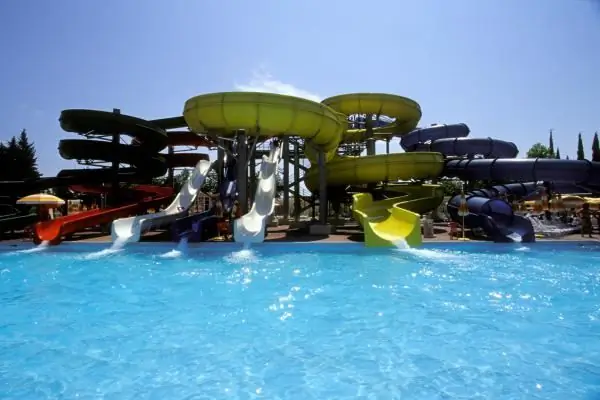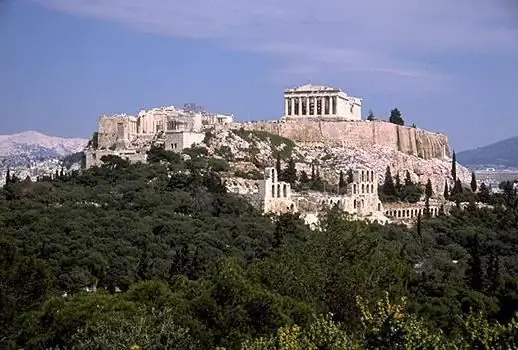- Author Harold Hamphrey [email protected].
- Public 2023-12-17 10:06.
- Last modified 2025-01-24 11:10.
The vast territory of Pushkin Square is located in Zemlyanoy Gorod, which occupies part of the center of Moscow. It is located two kilometers from the northwestern side of the Kremlin. Its borders are in contact with the outskirts of two boulevards - Strastnoy and Tverskoy.
In other words, the Boulevard Ring, which belongs to the Tverskoy district, includes Pushkinskaya Square. The metro is represented here by three stations at once: Pushkinskaya, Tverskaya and Chekhovskaya.

Historical names of Pushkin Square
From the very beginning, the square was called Strastnaya. It was the name of the monastery nearby. It was also called the Tver Gate Boulevard, which once served as the entrance to the White City.
The current name, "Pushkin Square", was officially assigned to the territory in 1937. They named her so in commemoration of the centenary of the death of the great Russian poet.
Historical facts related to the Tver Gates
At the end of the sixteenth century, in the place where Pushkinskaya Square is now spread, the Tver Gates leading to the streets of the White City towered. On the road leaving them, the travelers went to Tver and St. Petersburg. The gates rose above the grounds of I. D. Miloslavsky, who is the father-in-law of Tsar Alexei Mikhailovich.
Next to the gate in 1641, the construction of a church in honor of the Passionate Icon of the Mother of God was completed. In 1645, the Strastnoy Monastery (for women) was immediately opened. Nearby, a stone two-tented temple of Demetrius of Thessalonica was built. On Malaya Dmitrovka, a place was found for the “Traveling Embassy Court”. It received European envoys approaching Moscow from Novgorod.
In the neighborhood of the embassy courtyard, an original three-hipped Cathedral of the Nativity of the Virgin in Putinki was erected. The building of the church has survived to this day. In 1641 blacksmiths settled in the gate area. They worked in 63 forges, next to which flour and butcher shops were built in 1670.
Creating a square
Tver Gate existed until 1720. At the site of their demolition, a compact platform was formed, which was decorated with a triumphal arch, intended for the solemn entry of Peter I, who concluded the Treaty of Nystadt. Subsequently, on the eve of the upcoming coronations, a new arch was erected here.
The wall of the White City was destroyed in 1770. In 1784 Kuznetsov was forced out behind Zemlyanoy Val. After 11 years, the need for shops disappeared, their owners also had to move to another place. ATIn 1791, the Cathedral of Demetrius of Thessalonica was rebuilt. In its place, a baroque temple was built, famous for its choirs.
Five years later, Tverskoy Boulevard lay in the area of the dismantled wall, the first public promenade that Moscow received. From now on, Pushkinskaya Square will begin to change and become a favorite place for the promenade.
Flourishing of Pushkin Square

In 1803, the construction of a mansion was completed here, the owner of which, M. I. Rimskaya-Korsakova, arranges luxurious balls in it. Griboyedov and Pushkin visited Famusov's house (as this pompous palace was called). After the death of the hostess, the building was transferred to the Stroganov School of Technical Drawing. And during the period of building socialism, it was transferred to the Communist University of the Peoples of the East.
After 52 years, a wall was added to the Strastnoy Monastery, decorated with turrets and a bell tower, which allowed it to dominate other structures. In 1880 a monument was erected on Pushkin Square. Monument to A. S. Pushkin is designed by the sculptor A. Opekushin. Funds for its construction were collected through a subscription opened by I. Turgenev and F. Dostoevsky.

Until 1890, Strastnaya Square was a place of trade. At a small auction they sold meat, flour, firewood and hay. In 1872, a line of a horse-drawn railway was pulled along its territory to Petrovsky Park. When twenty-seven years have passed, the first Moscow trams will run along it. And after another 8 - a horse-drawn cab will change a taxi.
Revolutionary uprisings on Strastnoy Boulevard
And only the events of 1905 and 1917 will overshadow the heyday of Tverskaya Square. She, like the whole country, will survive the sad days of hard times. At first, dragoons and the army fought against the rebels on the barricades of Strastnoy Boulevard. The rebels were shot. In the days of the October Revolution, the boulevard was taken over by the Bolsheviks. She was the link between the Moscow City Council and Presnya.
Square in the era of socialism
The Holy Monastery will be closed in 1919. It will sit idle for nine years. And then they organize an anti-religious museum in it. In 1927, the editorial office of the Izvestia newspaper will be built next to it. In 1934, two neighboring mansions at numbers 16 and 16/2 are reconstructed and connected. The dome of the structure will form a characteristic silhouette, thanks to which Pushkinskaya Square will acquire a recognizable appearance. The new building will become the abode of the All-Union Theatrical Society, the House of Actors and the editorial office of the Moscow News newspaper.

In the same year, the temple of Demetrius of Thessalonica will be demolished. Five years later, a structure with a turret topped with a sculpture of a girl with a model of a yacht will be built in its place. Because of the sculpture, the building was nicknamed "The House Under the Skirt". The Holy Monastery stood until 1938.
A decade later, Stalin ordered the monument to Pushkin moved to the place where the monastery stood. And two years later, a beautiful square was created on the boulevard. In 1961, the Rossiya theater was erected on the free part of the monastery territory. Pushkin Square never ceased to change, losing certain cultural and historicalobjects.

So, in 1975, it was decided to demolish the Famusov House. Public protests came to nothing. The historic building was demolished, and soon a new building grew up in its place, where the editorial office of the Izvestia newspaper was settled.
In the era of Stalin, during the days of national festivities, festivities were organized on the boulevard. May Day and October demonstrations were held on the square, pop artists and a military band performed. Bazaars sold children's goods, sweets, traditional Russian food and scarce products.
Boulevard in the period of stagnation and perestroika
Since the stagnation, Strastnoy Boulevard has become an arena for sanctioned and spontaneous rallies and demonstrations. Dissidents traditionally held their foot marches here. The first “glasnost rally”, which took place on 05.15.65, on Constitution Day, turned into annual dissident demonstrations, to which Andrey Sakharov came, among others.
During the period of perestroika, Pushkinskaya Square turns into an important center of public life. Near the editorial office of the Moskovskiye Novosti newspaper, the fresh press was hung out on the installed stands. On this spot, the public daily crowded, arranging heated discussions about political changes in the country. In 1988, a rally organized by the Democratic Union without the permission of the authorities was dispersed on the boulevard. Significant "dissenting marches" will be held here, entered on the pages of national history in 2007.

Opening on 01/31/90 of the firstMcDonald's in Russia is, perhaps, the most epoch-making event of the times of the Soviet Union, which surprised the citizens of Pushkin Square. A photo of the restaurant that made a splash was found in almost every print publication of that time. People who wanted to taste foreign food stood in long queues in the cold.
Reviews of tourists
This part of the Boulevard Ring, although it has lost its original appearance with majestic old buildings and churches, is always lively. Muscovites and guests from the capital make appointments here. Vacationers are drawn to the monument to A. S. Pushkin, to the benches near the graceful fountains. Tourists like to relax in restaurants and bars built of glass, decorated with bizarre figures cast in metal. For a long time, the guests of the capital will remember leisurely walks along the luxurious square.






